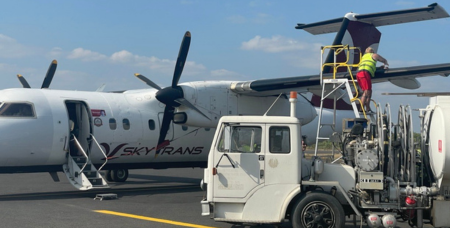First Nations council workers across 5 Far North Queensland remote communities are being trained to manage local airports—the vital links to the rest of the country.

The aerodrome training has been provided to 36 participants in Aurukun, Lockhart River, Kowanyama, Palm Island and Pormpuraaw with training yet to start in the Torres Strait Island Regional Council area.
Under Paving the Way – First Nations Training Strategy, $3 million (over 3 years, until 2025) was allocated to the Local Government Association of Queensland's Indigenous Capacity Building program.
This support includes animal management training to address wild dog and horse issues, training for a fitness certificate and aerodrome training.
This is helping to build capacity across the communities' workforce and provide local residents with local jobs.
Toll Aviation and Aerodrome Trainer and Chief Flight Instructor, Wayne Condon, says aerodrome training is crucial in ensuring that staff in remote communities are well-prepared to manage airport operations safely and efficiently.
'The specialised training equips the students with the skills to adhere to Civil Aviation Safety Authorities (CASA) Regulatory Act and standards, maintaining high safety levels whilst operating on some of Australia's busiest and complex regional and remote airports,' Wayne said.
'This is essential for the smooth running of the isolated airstrips and the connectivity of the communities.'
The training, completed over seven days, prepares council staff to take on roles in aerodrome reporting, aeronautical radio operations and works safety, and to obtain their aviation English language proficiency.
For more information
Through the First Nations Training Strategy, skilling and training pathways are opening opportunities for employment to meet local, community and regional needs.
